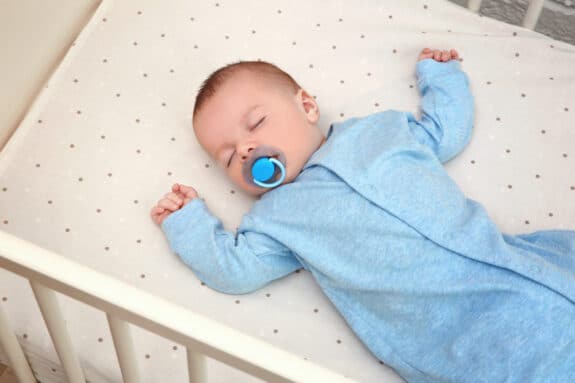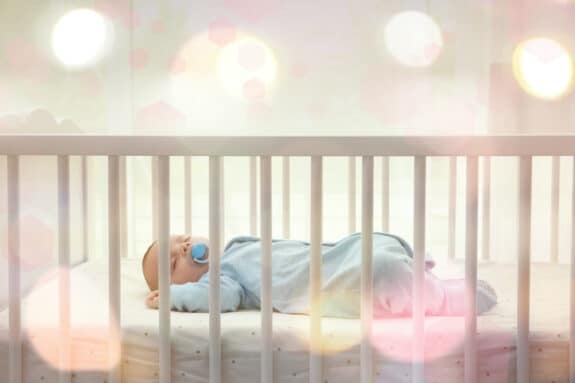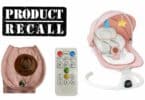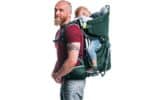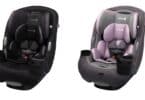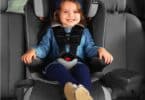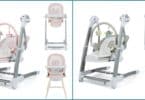It is estimated that at least 1,338 Canadian infants died from unsafe sleep risk factors present between 2009 and 2019.
Over the last three decades, there have been a lot of public health resources that have gone into educating parents on the safest sleeping environments for their infants.
The Back to Sleep campaign dramatically decreased infant deaths in the 1990s. Through this campaign, parents were educated that the back sleep position does not increase the risk of choking and aspiration in infants, even those with gastroesophageal reflux because infants have airway anatomy and mechanisms that protect against aspiration.
During a five-year period between 1994, when the campaign began, and 1999, the SIDS rate in the U.S. dropped by more than 50 percent.
Despite this, there have still been too many babies who are dying from unsafe sleeping environments. Infants sleeping on a surface such as a soft mattress or pillows or a surface cluttered with items, or sharing a sleep space with an adult or another infant can contribute to suffocation.
While analyzing 476 infant deaths in five provinces and three territories, the CBC found that at least 61 percent of the 476 infants who died had been bed-sharing.
Additionally, in at least 77% of cases, the infant had been sleeping on a surface not recommended as safe by health officials, including an adult bed or a couch. In some cases, they found that the whole family slept together on a mattress on the floor. They also found the baby was placed to sleep in an adult bed or on a couch after feeding.
It is common for moms who have just breastfed to share the bed with their sleeping baby. It is recommended parents use a cradle or bedside sleeper to keep their little one close but in their own safe space if they are nursing in the middle of the night.
To ensure your baby is safest during bedtime the AAP recommends:
- Back to sleep for every sleep. To reduce the risk of SIDS, infants should be placed for sleep in a supine position (wholly on the back) for every sleep by every caregiver until the child reaches 1 year of age.4,–8 Side sleeping is not safe and is not advised.
- Use a firm sleep surface. Infants should be placed on a firm sleep surface (eg, mattress in a safety-approved crib) covered by a fitted sheet with no other bedding or soft objects to reduce the risk of SIDS and suffocation.
- Breastfeeding is recommended. Breastfeeding is associated with a reduced risk of SIDS. Unless contraindicated, mothers should breastfeed exclusively or feed with expressed milk (ie, not offer any formula or other nonhuman milk-based supplements) for 6 months, in alignment with recommendations of the AAP
- Room-sharing with the infant on a separate sleep surface is recommended. The infant’s crib, portable crib, play yard, or bassinet should be placed in the parents’ bedroom until the child’s first birthday. Although there is no specific evidence for moving an infant to his or her own room before 1 year of age, the first 6 months are particularly critical, because the rates of SIDS and other sleep-related deaths, particularly those occurring in bed-sharing situations, are highest in the first 6 months. Placing the crib close to the parents’ bed so that the infant is within view and reach can facilitate feeding, comforting, and monitoring of the infant.
- Keep soft objects and loose bedding away from the infant’s sleep area. Soft objects such as pillows and pillow-like toys, quilts, comforters, sheepskins, and loose bedding, such as blankets and nonfitted sheets, can obstruct an infant’s nose and mouth. An obstructed airway can pose a risk of suffocation, entrapment, or SIDS
- Consider offering a pacifier at naptime and bedtime. Although the mechanism is yet unclear, studies have reported a protective effect of pacifiers on the incidence of SIDS. The protective effect of the pacifier is observed even if the pacifier falls out of the infant’s mouth. Because of the risk of strangulation, pacifiers should not be hung around the infant’s neck. Pacifiers that attach to infant clothing should not be used with sleeping infants.
- Avoid smoke exposure during pregnancy and after birth. Both maternal smoking during pregnancy and smoke in the infant’s environment after birth are major risk factors for SIDS.
- Avoid alcohol and illicit drug use during pregnancy and after birth. There is an increased risk of SIDS with prenatal and postnatal exposure to alcohol or illicit drug use.
- Avoid overheating. Although studies have shown an increased risk of SIDS with overheating, the definition of overheating in these studies varies. In general, infants should be dressed appropriately for the environment, with no greater than 1 layer more than an adult would wear to be comfortable in that environment.
- Do not use home cardiorespiratory monitors as a strategy to reduce the risk of SIDS. The use of cardiorespiratory monitors has not been documented to decrease the incidence of SIDS. These devices are sometimes prescribed for use at home to detect apnea or bradycardia and, when pulse oximetry is used, decreases in oxyhemoglobin saturation for infants at risk of these conditions.
Social Danger
Many furniture brands and influencers share images on social media of cribs dressed with bumpers, blankets, stuffed animals, and pillows when in fact there should be nothing in your baby’s crib when they go to sleep. Babies can be swaddled or in a sleeping bag to keep them warm on cold evenings.
While it may appear to be convenient, sitting devices, such as car seats, strollers, swings, infant carriers, and infant slings, are not recommended for routine sleep in the hospital or at home, particularly for young infants. Infants who are younger than 4 months are particularly at risk, because they may assume positions that can create a risk of suffocation or airway obstruction or may not be able to move out of a potentially asphyxiating situation.
Parents should also ensure that baby monitor wires and blind cords are not near the crib as well.

